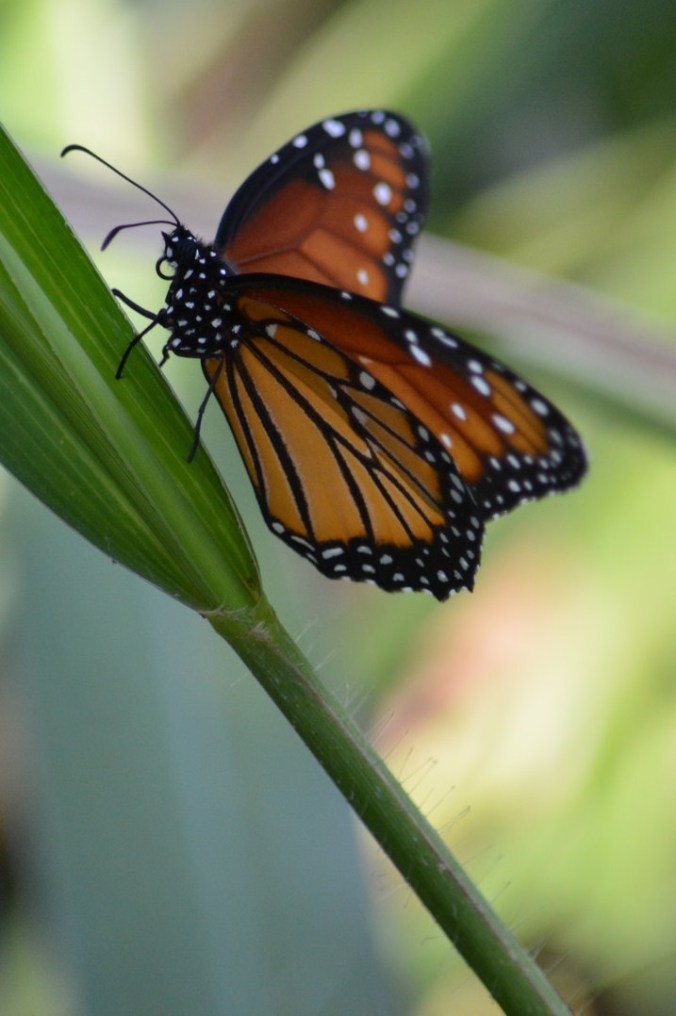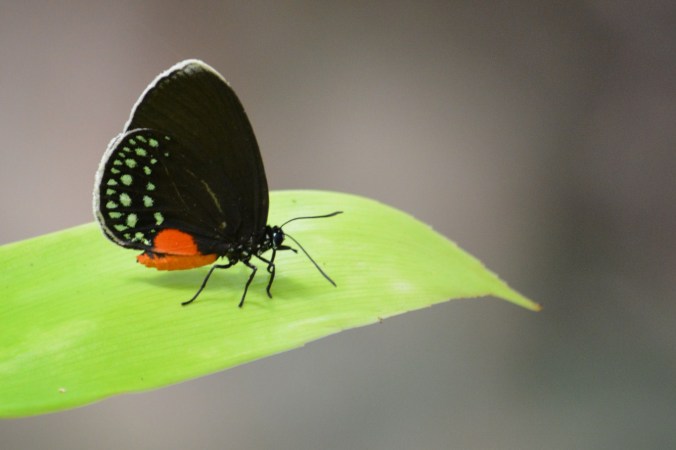*Pour lire cet article en français
*This blog post was originally published in the “Sous la loupe” section of the Spring 2015 edition of Antennae, the Bulletin of the Entomological Society of Québec.
Who hasn’t felt awestruck at the sight of a monarch butterfly (Danaus plexippus).
That feeling is to be expected. As many other insects, the monarch is
desperately trying to be seen: it relies on aposematism, a strategy
meant to avoid being eaten. A bird will only make the mistake of eating a
monarch once. This butterfly is filled with cardenolides, toxic
compounds that are acquired during the larval stage as the caterpillar
is feeding on milkweed (Asclepias sp.). After this disturbing
experience, the disgusted bird will remember to avoid any butterfly
sporting bright orange and black wings. Butterflies are not the only
fans of this strategy. Aposematism can be found in other insects, such
as ladybird beetles, but also among animals as different as poison dart
frogs and opistobranchs (colourful marine slugs). Just like the monarch,
many species acquire toxic compounds from their food. Other species
produce these poisons themselves. And to advertise their toxicity to the
world, colour is not the only medium! Many species advertise to
predators that it is better to leave them alone through sounds or
odours. Simply said, aposematism means telling predators, through a
variety of signals, that an animal is well defended.
Danaus gilippus
is a close relative of the monarch that can be found in tropical areas.
Darién Province, Republic of Panamá (Photo: Nicolas Chatel-Launay).
Aposematism is not a novel discovery.
This strategy was first suggested as a mechanism born from evolution by
Alfred Russel Wallace in 1866. Even if aposematism is easy to
understand, many questions still arise among scientists about this
strategy. For example, how did it evolve? Could a butterfly like the
monarch have developed it gradually, becoming more orange with each
generation? Alternatively, did it evolve through rapid mutation? A lot
of research will be needed to answer these questions. Other researchers
try to tease apart the role of sexual selection in aposematism. Does a
colourful animal have more descendants because predators avoid it, or
because sexual partners prefer colourful mates?
Less well-known than the monarch, Eumaeus godartii
(Lycaenidae) is another good example of aposematic butterfly. Chagres
National Park, Republic of Panamá (Photo: Nicolas Chatel-Launay).
Another interesting aspect of aposematism
is the phenomenal amount of mimetic strategies that arise from it. In
Québec, one can meet the viceroy (Limenitis archippus) that,
just as the monarch, covers itself in orange and black. But the viceroy
is not poisonous! Thanks to this deception, the colours of the monarch
allow the viceroy to be avoided by birds. This type of mimetic behaviour
is called “Batesian mimicry”. This form of mimicry is also common in
many harmless snakes that copy the colourful patterns of extremely
venomous coral snakes.
A different situation is possible. What
if many toxic species all look alike? If they do, all these species
increase their chance of survival if a predator has learned to avoid the
shared color pattern. All that is needed is for a predator to have had
one bad experience with only one of the mimetic species for all to be
protected. This type of mimicry is called “Müllerian mimicry”.
Butterflies of the Heliconius genus, found in Central and South
America are among the best studied cases. These toxic butterflies have
very variable wing patterns, even within a single species. Surprisingly,
two different species captured in the same locality look more similar
than they do specimens of their respective species collected from far
away locations. This regional similarity creates an effective protection
for all mimics in the area.
Butterflies of the Heliconius
genus and other closely related genera are an excellent example of
Müllerian mimicry. Metropolitan Natural Park, Republic of Panamá (Photo:
Nicolas Chatel-Launay).
Many scientists are presently working on
the mysteries still surrounding aposematism. Some use the latest genomic
techniques, while others continue a long tradition of behavioural
studies. After more than a century of research on this relatively simple
strategy, there is still much to unravel and entomology remains a
limitless field of study.

